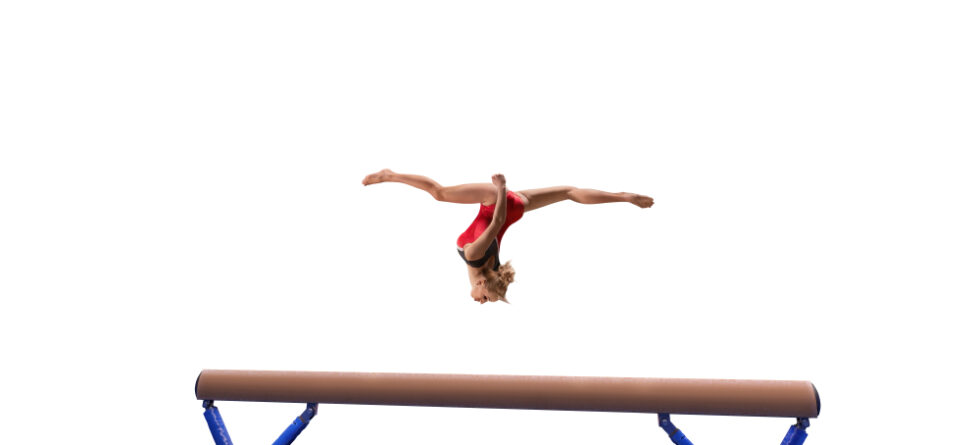In gymnastics, different events can lead to various types of injuries, and the risk of injury varies depending on factors such as skill level, training, and technique. While it’s challenging to pinpoint a single gymnastics event that causes the most injuries universally, some events are associated with higher injury rates than others.
Common gymnastics events and their associated injury risks include…
- Floor Exercise – Floor exercise routines involve a combination of tumbling passes, dance elements, and leaps. The risk of injury in floor exercise is relatively high, as gymnasts perform dynamic movements with multiple twists and somersaults. Injuries may include sprains, strains, and fractures, particularly in the ankles and wrists.
- Vault – The vault event involves sprinting down a runway and performing gymnastics over an apparatus. Injuries in vault can occur if a gymnast fails to execute the vault correctly, leading to falls, collisions, or impact-related injuries, such as sprained ankles, fractures, or head injuries.
- Balance Beam – The balance beam is a narrow apparatus, and gymnasts perform intricate acrobatic moves and leaps on it. The risk of injury on the balance beam is associated with falls or missteps, leading to injuries like ankle sprains, wrist injuries, and concussions.
- Uneven Bars – The uneven bars require gymnasts to perform complex swinging, release, and regrasp movements. Injuries can occur due to failed skills or mistimed releases, resulting in falls and potential upper body injuries, such as shoulder or elbow issues.
- Parallel Bars and High Bar (Men’s Gymnastics) – Similar to the uneven bars, injuries in men’s gymnastics can result from failed parallel and high bar skills. Falls and upper body injuries are potential risks, particularly to the shoulders and wrists.
- Pommel Horse (Men’s Gymnastics) – The pommel horse event involves intricate circular movements on a stationary apparatus. While it may not have as high injury rates as some other events, injuries can occur from falls or strained muscles.
Gymnastics coaches and organizations prioritize safety, and gymnasts receive extensive training and conditioning to reduce the risk of injuries. Proper technique, spotting, and the use of safety equipment, such as mats and protective gear, also contribute to injury prevention.
Injuries can still occur in gymnastics but are not solely tied to one specific event. Instead, they can result from a combination of factors, including the gymnast’s skill level, training regimen, and the execution of skills. In any sport, safety measures and injury prevention strategies are crucial to minimize the risk of injuries.




